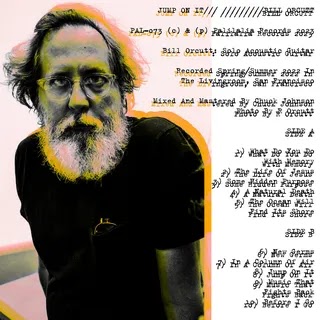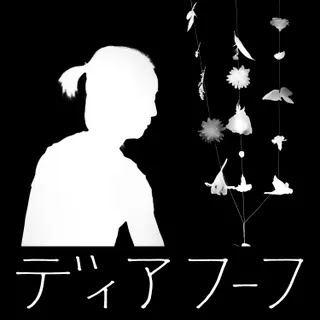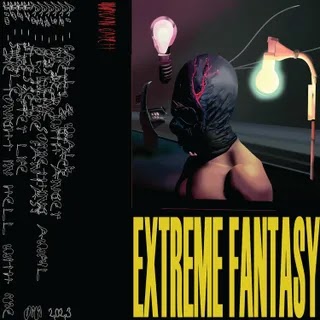Trading his High Aura’d alias for his own name, the Providence experimental musician finds evocative depths in the small, transitory details of slowly evolving drone pieces.
John Kolodij saw the slowly unraveling instrumentals he made for nearly a decade as High Aura’d as the soundtrack to spaces he barely knew. In 2017, he told Tiny Mix Tapes that as he sat at home working on his music, he’d often imagine himself in far-off lands—“in a desert, at the edge of an ocean, nighttime in Sonoma, crossing a footbridge in Miami”—and try to make pieces that fit those landscapes. It was his way, he says, of trying to “score everyday life,” and his years of recording with that idea as a guidepost resulted in an evocative, strikingly visual body of work. High Aura’d’s pieces were minimal, but there were always suggestions of memory, adventure, and kaleidoscopic imagery woven into the gentle drones.
For First Fire • At Dawn, Kolodij left the High Aura’d banner behind in favor of his given name, but his instrumentals still follow in the transportive tradition of his earlier pieces. As with a lot of amorphous music, there’s certainly joy in just drifting along to the slow-panning movements of the record’s two side-long pieces, following the arc from noise to melody and back again. But First Fire • At Dawn is special, even among Kolodij’s accomplished catalog, because of the delight it seems to take in small, transitory details, the shimmery liminal spaces that naturally emerge as its tracks build and boil.
“First Fire” is the more austere of the two pieces, opening with the stark wheeze of a grayscale drone that slowly grows in scale and momentum throughout its nearly 18-minute runtime. By the time it peaks, around the 13-minute mark, the music resembles something more like a snowblind black-metal riff than the ominous rumble that started the song. The instrumental accumulation is glacial, but if you pay close attention there’s beauty to be found in the growing maelstrom. The nimbus-like billowing of Kolodij’s guitar work often creases and coalesces into striking shapes, revealing complex harmonies and churning melodies in the depths of the drone. These moments appear for just a second, then pass, a tactic that makes these pieces feel illusory but engaging: You lean closer to hear what other secrets might be lurking in the murk.
The record’s other side, “At Dawn,” is gentler. Built around the mantra-like repetition of a simple banjo melody and some placid guitar work, it’s a stretched-out, twisted-up sort of Americana, similar to Charalambides’ distressed blues or the Appalachian fog of the composer Ross Gentry’s music as Villages. But even though its form is more recognizable at first, “At Dawn” is just as focused on the shape-shifting details that give “First Fire” color. The track begins with the twittering of field recordings of birds, which then make little appearances throughout, adding micro-melodies and a sense of real-world groundedness to the loping instrumental. As the piece unfolds, Kolodij’s contributions are joined by some gasping fiddle work from Anna RG of the experimental folk duo Anna & Elizabeth and glittering mallet percussion from the composer Sarah Hennies.
If, as the song’s title suggests, it’s meant to be a companion to early morning quietude, these contributions from Kolodij’s friends are the ornamentation that lends that time of day its strange magic: The string flourishes hang delicately like fog on a lake, a vibraphone glinting like dew on the grass in the half light. As soon as these moments of bliss appear, they vanish, blending into the blustery ambiance and the sound of rushing water. First Fire • At Dawn relishes in these moments, in the ways their details can appear then evaporate, almost as quickly as you can perceive them. He has said his music has always been about astral trips to far-away lands, but First Fire • At Dawn is less about the destination than the journey itself. You stare outside as the landscape changes—every moment you’re somewhere new.
















0 comments:
Post a Comment